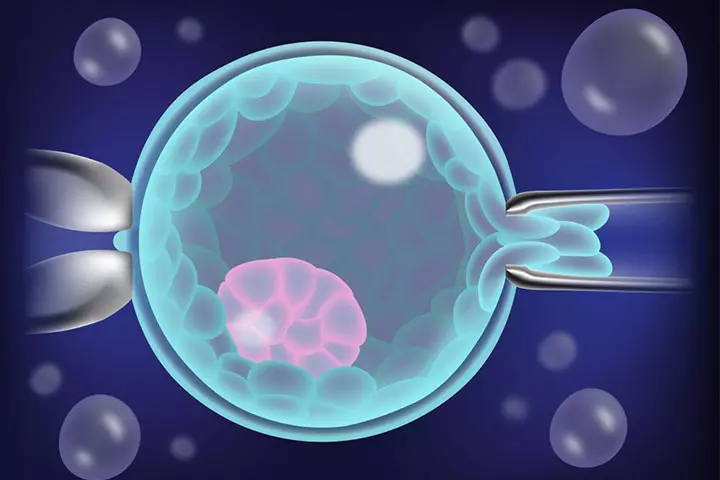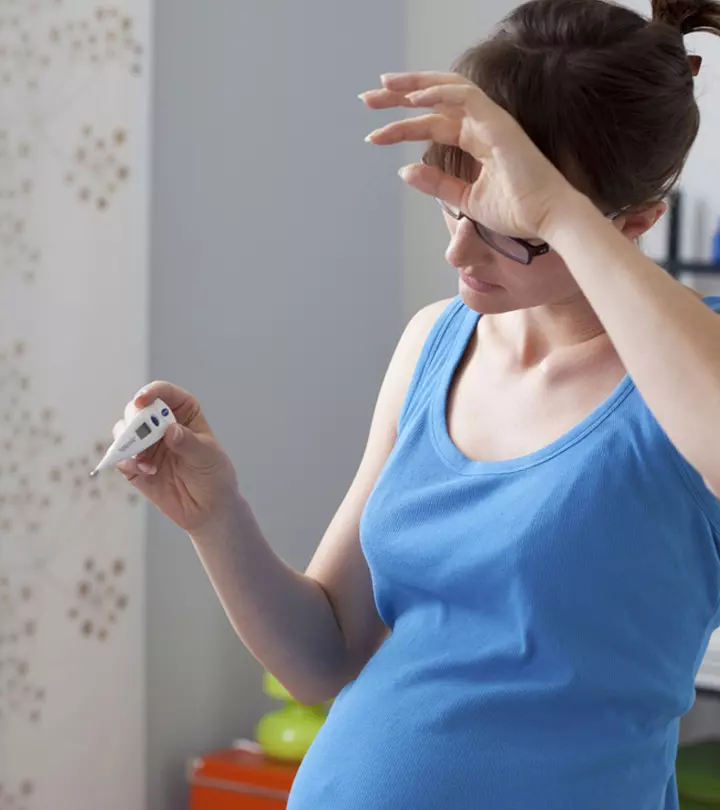
Image: iStock
Every parent wants to conceive a healthy baby, which is their priority. However, it is common to find parents who prefer having a boy or a girl, especially when this is not their first child (1).

It is important to understand that there are no assured methods for the sex selection of a baby. In all cases, even in unassisted pregnancies, there is a 50% chance of conceiving a baby of either sex (2).
The post informs readers how to conceive a baby boy. However, it does not propose or promote any discrimination between boys and girls. It also does not support any such methods of sex selection. Moreover, even though the meanings of the words sex and gender are evolving into two different concepts, the article uses these words interchangeably to indicate either a boy or a girl.
Key Pointers
- The Y chromosome of the men’s sperm is responsible for a woman to conceive a male child.
- The Billings method, the Shettles method, the Whelan method, etc., are folklore intercourse methods to conceive a boy.
- Preimplantation genetic diagnosis and sperm sorting are medical interventions for couples keen on conceiving a baby boy.
What Determines The Sex Of A Baby?

The father determines the sex of a baby. The male sperms carry either an X chromosome or a Y chromosome (XY), while a female egg carries only the X chromosome (XX). Therefore, the mother conceives a baby girl if her X chromosome combines with the X chromosome of the father. In contrast, she conceives a baby boy if her X chromosome combines with the Y chromosome of the father (3).
Ideally, both Y chromosome-bearing sperm and X chromosome-bearing sperm have an equal opportunity to fertilize the egg during the process of reproduction. Once conception occurs, a sex determination test can be conducted to determine the sex of the baby, but only if recommended by a doctor and deemed legal in your country. Nonetheless, it is important to note that the baby’s gender should not be the primary concern, and one should always prioritize for a healthy pregnancy and delivery.
Can You Even Choose The Sex Of Your Baby?
The answer is no. Although medical advances are getting closer to developing methods that might allow you to choose the sex of your baby, they are still nascent, not to mention invasive and costly.
Are There Ways To Conceive A Baby Boy?
Here are some theories that have been used as popular methods of sex selection for quite some time. However, it is very important to remember that they are supported with little or no scientific evidence. They can be classified by their approach.
Intercourse timing to conceive a boy
Nosa, a mother of two sons and a daughter, shares her ideas on how she feels one can have an increased chance of conceiving a baby boy. She emphasizes two important factors: timing and frequency. According to her, having intercourse only on the day of ovulation and two days after the ovulation day may increase the chances of conceiving a baby boy. She says, “When I was trying for our third child, I knew my body well, especially the signs of ovulation. I used apps on my phone to track my cycle and pinpoint ovulation. Once those apps signaled it was the right time and I could see the signs of ovulation in my body, we tried a few times. I had a strong feeling it would be a boy even before he was conceived because of the timing (i).”
Here are a few more methods that are believed to increase the chances of conceiving a baby boy. These conception methods are based on planning the intercourse timing a few days before and after ovulation. All the methods and conception tips mentioned here offer different suggestions.
1. The Billings method
The Billings method (a family planning method), was developed by Dr. John and Evelyn Billings. According to this method, you have to track the texture and consistency of your cervical mucus. If you plan any sexual intercourse during the peak period (less than two days before ovulation), there are chances to conceive a baby boy when the mucus is thin and slippery. Although there is no guarantee of success of this method, research carried out in 2011 indicates a success rate of around 95% (4).
A major drawback of this method is that, for most women, it is difficult to evaluate the exact consistency of cervical mucus that would give successful results. Moreover, the consistency of the mucus sometimes changes due to reasons other than ovulation, such as a result of medications or the use of lubricants.
2. The Shettles method
The Shettles method, a type of baby planning method, was suggested by Dr. Landrum Shettles, the author of the book, How to Choose the Sex of Your Baby. According to Dr. Shettles’ research, male sperms (carrying Y chromosomes) are smaller, weaker, lighter, and faster, while female sperms (carrying X chromosomes) are bigger, stronger, heavier, and slower. Thus, if the intercourse is closer to the day of ovulation, there will be a greater chance to conceive a baby boy because male sperm will reach the egg first. There is to consider that the day of ovulation could be hard to predict or change due to medical or stress reasons.
Some researchers disagree with this theory, as there is strong medical evidence to prove that this method allows you to choose the sex of your baby with certainty (5).
 Point to consider
Point to consider3. The Whelan method
The Whelan method was given by Dr. Elizabeth Whelan. This pregnancy planning method contradicts the Shettles method by advising that the best time to get pregnant is at least four to six days before ovulation (6).
 Quick fact
Quick factLike the other methods, this method also does not have any scientific evidence to prove its certainty. In addition, critics feel that four to six days before ovulation is way ahead of the fertile period, and it might decrease the chance of pregnancy.
A 1995 study involving 221 healthy women and published in The New England Journal of Medicine has proven that intercourse timing did not affect the gender of infants conceived (7).
Medical interventions to conceive a boy
If you are keen on conceiving a boy, medical interventions might give you fairly successful results. However, these methods can be invasive and costly.
1. Preimplantation genetic diagnosis

This method is carried out in combination with in-vitro fertilization (IVF). Once the eggs fertilize and embryos start forming in the petri dish, doctors examine their cells. Only the embryo of the desired sex is selected and implanted in the uterus of the mother.
Although this method is efficient in conceiving the desired sex of the baby, it is usually controversial. As a result, fertility centers mostly use preimplantation genetic diagnosis to identify and prevent serious genetic disorders and not to select the gender of a baby (8).
2. Sperm sorting
Sperm sorting is also called the MicroSort Method. It is done with the help of flow cytometry. In this method, the sperm sample is separated into the male-producing sperm (Y chromosome sperm cells) and female-producing sperm (X chromosome sperm cells). Since the female-producing sperm has 2.8% more DNA content than the male-producing sperm, it is heavier. The separated sperm cells with the desired chromosome can be used for in-vitro fertilization or intrauterine insemination.
Sperm sorting is not as effective as preimplantation genetic diagnosis for selecting the desired sex (9).
What Are The Other Methods To Conceive A Boy?
Apart from the timing method and the medical procedures, people may also consider natural methods to conceive a son. However, these methods do not have any scientific backing to prove that they improve your chances of having a baby of a particular sex.
1. Diet and nutrition: Healthy pregnancy is closely related to good reproductive health and a healthy diet. However, a study done in 2008 indicated that a woman’s diet before and during pregnancy can also affect the sex of her baby. The study showed that women who consumed more calories and potassium-rich food had a greater chance of delivering a baby boy (10).

2. Gender selection kits: Many women prefer to use at-home gender selection kits because they are natural, non-invasive, and affordable. These kits claim to improve the chances of conceiving a particular gender of the baby by making the vaginal environment more receptive. Although many gender selection kits are available in the market, there is no scientific evidence to prove that they work (11).
3. Sex positions: Many people believe that sex positions that allow deep penetration are more favorable to conceive a baby boy. The idea behind this belief is that since a male sperm cannot swim as far as female sperm, a deeper penetration would help it reach the egg before its female counterpart. However, there is no scientific evidence to back this belief.
What Does Ayurveda Say?

Ayurveda gives a detailed description of the care you must take before, during, and after pregnancy. Many Ayurvedic tips allow you to enjoy a happy pregnancy and deliver a healthy baby. However, there are no specific Ayurvedic scripts that assert methods, which guarantee the conception of a baby of a specific gender (12).
Frequently Asked Questions
1. How likely is it to have a boy after a girl?
The chances of conceiving a baby boy after birthing a baby girl are precisely 50%, depending on the sperm, whether it is carrying an X chromosome or Y chromosome.
2. What are the symptoms of conceiving a boy?
There are no specific symptoms that can determine the gender of a baby except for the medical examination. However, the old wives’ tales and myths claim that glowing skin, no excess weight gain, and improved morning sickness are some symptoms of a baby boy, but there is no evidence to prove it.
3. Is there a particular age range for women associated with a higher probability of conceiving a boy?
No specific age range is associated with a higher probability of conceiving a boy. Existing studies focus on appropriate age ranges for conception in general, regardless of gender. A woman younger than 30 has an 85% chance of conceiving within the first year, while the chances decrease as a woman gets older, with a 75% chance at age 30, 66% chance at age 35, and 44% chance at age 40 (14).
4. How does the pH level of the reproductive tract affect the chances of conceiving a boy?
According to studies, the pH level of the reproductive tract can influence the chances of conceiving a boy. A higher alkaline vaginal pH is associated with a higher likelihood of conceiving a male fetus, while a more acidic vaginal pH is associated with a higher likelihood of conceiving a female fetus. These findings suggest that monitoring vaginal pH could be a natural method for predicting fetal sex (15).
5. Can genetic factors or family history influence the likelihood of having a boy?
Research has shown that genetic factors and family history can influence the likelihood of having a boy. The sex ratio in families has been observed to follow the father’s side rather than the mother’s side. For instance, men with more brothers are more likely to have male offspring, while those with more sisters may have more daughters. This pattern suggests that there may be a gene that regulates the balance of X- and Y-carrying sperm. Men who possess this gene, which increases Y chromosomes in their sperm, are more likely to have sons (16).
6. What are some common myths associated with gender selection?
The belief that a person’s diet, sexual position, or timing of intercourse can influence a baby’s gender is a myth not supported by scientific evidence. Claims that eating more red meat and chocolate, having sex during certain lunar phases, or having sex in the missionary position can produce a specific gender are unfounded.
If you wish to know how to conceive a baby boy, it is important to understand that none of the methods can accurately help you select the sex of your baby. Some methods people commonly use are the Billings method, the Shettles method, or the Whelan method. Medical interventions such as in-vitro fertilization or sperm sorting may help if you want a more successful result. You may also try using specific sex positions or a gender selection kit. However, know that motherhood is a beautiful journey, and giving birth to a healthy child is the most important thing than the gender of your child.
Infographic: Potential Ways To Conceive A Baby Boy
Deciding on the gender of the baby might feel unreal; however, several methods might increase your chances of conceiving a baby boy. Check out the following infographic to learn about some of these methods. However, remember, whether a baby is a boy or a girl, they bring immense joy and laurels to the family as they grow.
Some thing wrong with infographic shortcode. please verify shortcode syntaxIllustration: How To Conceive A Baby Boy? Does It Work?

Image: Stable Diffusion/MomJunction Design Team
Are you interested in learning about some conception methods that help you conceive a boy or a girl? Then, watch the video below to know its truth and its validity.
Personal Experience: Source
MomJunction articles include first-hand experiences to provide you with better insights through real-life narratives. Here are the sources of personal accounts referenced in this article.
i. How to increase your chances of conceiving a boy.https://www.youtube.com/watch?feature=shared&v=hjs8J7r7Mn8
References
- Sex Selection for Nonhealth-Related Reasons.
https://journalofethics.ama-assn.org/article/sex-selection-nonhealth-related-reasons/2012-02 - Boy or Girl — Can You Choose Your Baby’s Sex?
https://health.clevelandclinic.org/boy-or-girl-can-you-choose-your-babys-sex - Chromosomes.
https://www.thetech.org/ask-a-geneticist/which-parent-decides-whether-baby-will-be-boy-or-girl - Successful Sex Pre-selection using Natural Family Planning.
http://www.bioline.org.br/pdf?rh11010 - Valerie J Grant; (2006); Entrenched misinformation about X and Y sperm.
https://www.ncbi.nlm.nih.gov/pmc/articles/PMC1440662/ - The Whelan Method of Sex Selection.
https://embryo.asu.edu/pages/whelan-method-sex-selection - A J Wilcox et al.; (1915); Timing of sexual intercourse in relation to ovulation. Effects on the probability of conception survival of the pregnancy and sex of the baby.
https://pubmed.ncbi.nlm.nih.gov/7477165/ - Pre-Implantation Genetic Diagnosis.
https://www.ucsfhealth.org/treatments/pre-implantation-genetic-diagnosis - MicroSort.
https://embryo.asu.edu/pages/microsort - Fiona Mathews et al.; (2008); You are what your mother eats: evidence for maternal preconception diet influencing foetal sex in humans.
https://royalsocietypublishing.org/doi/10.1098/rspb.2008.0105 - Pragya Rai et al.; (2018); Global sex selection techniques for family planning: a narrative review.
https://pubmed.ncbi.nlm.nih.gov/30152706/ - Simplify Your Pregnancy with Ayurveda.
https://artoflivingretreatcenter.org/blog/simplify-your-pregnancy-with-ayurveda/ - Pregnancy- Identifying fertile days
https://medlineplus.gov/ency/article/007015.htm - Knowledge about the impact of age on fertility: a brief review
https://www.ncbi.nlm.nih.gov/pmc/articles/PMC7721003/ - Effect of vaginal pH in preconceptional fetal sex determination.
https://www.semanticscholar.org/paper/Effect-of-vaginal-pH-in-preconceptional-fetal-sex-Gaber-Saleh/d827d2eccba354528604af6e89ae3840ba67b88a - Is it a boy or a girl? The father’s family might provide a clue.
https://utswmed.org/medblog/it-boy-or-girl-fathers-family-might-provide-clue/#:~:text=It’s%20all%20about%20Dad’s%20genes&text=A%20man’s%20X%20and%20a
Community Experiences
Join the conversation and become a part of our nurturing community! Share your stories, experiences, and insights to connect with fellow parents.
Read full bio of Dr. Karla S. Sanchez-Banos
Read full bio of Pragya Bhargavi
Read full bio of Rebecca Malachi
Read full bio of Reshmi Das

















